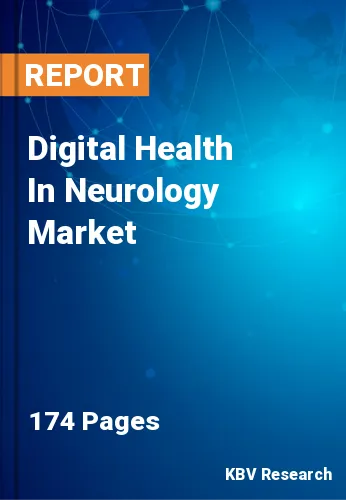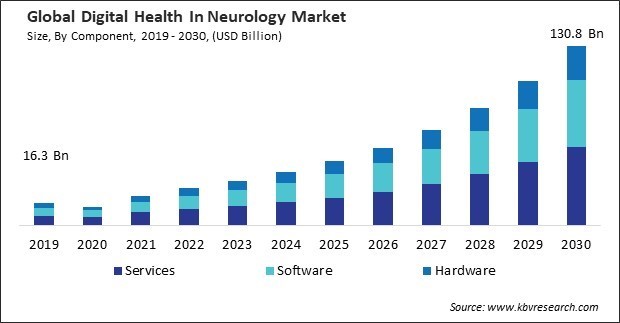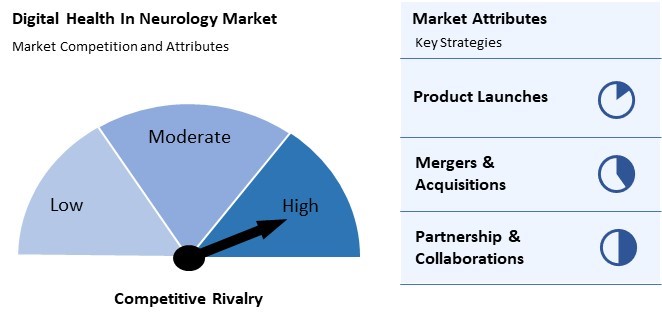
The Global Digital Health In Neurology Market size is expected to reach $130.8 billion by 2030, rising at a market growth of 22.2% CAGR during the forecast period.
The North American healthcare system has been increasingly adopting telehealth solutions, which will likely impact neurology as well. Consequently, the North America segment captured $10,366.7 million revenue in the market in 2022. Telehealth platforms allow patients to consult with neurologists remotely, improving access to care, especially for individuals in remote or underserved areas. Hence, these segments will expand rapidly in the coming years.

Wearable devices can continuously track vital signs such as heart rate, respiratory rate, and blood pressure. For individuals with neurological disorders, changes in vital signs can provide early indications of potential issues or the effectiveness of ongoing treatments. Moreover, wearable devices with sleep monitoring capabilities offer insights into sleep patterns and disturbances. Sleep disturbances are common in neurological disorders such as epilepsy and can be important indicators for diagnosis and treatment adjustments. Some advanced wearable devices have EEG sensors that can monitor brainwave activity.
Additionally, the increasing prevalence of neurological disorders, encompassing conditions such as Alzheimer's disease, Parkinson's disease, epilepsy, and multiple sclerosis, has led to a growing demand for advanced and innovative digital health solutions. As per the data from the Pan American Health Organization (PAHO), neurological disorders caused 533,172 deaths in the Pan American Health Organization (PAHO) region in 2019, of which 320,043 (60%) were women and 213,129 (40%) were males. Digital health solutions contribute to the early detection and diagnosis of neurological disorders by integrating advanced diagnostic tools and technologies.
However, the regulatory environment for digital health applications in neurology is multifaceted, involving adherence to various regulations and standards. Obtaining reimbursement approval from insurance providers and payers is closely tied to regulatory compliance. Demonstrating the clinical and economic value of neurology applications is essential for gaining reimbursement, but this can be lengthy. Hence, these factors can hamper the demand in the market.
Moreover, the pandemic accelerated the adoption of telehealth in neurology, allowing patients to receive consultations and follow-up care remotely. Telehealth platforms became essential for maintaining continuity of care while minimizing the risk of virus transmission in healthcare settings. Digital health solutions, including remote monitoring devices and wearable technologies, gained prominence for monitoring patients with chronic neurological conditions. Remote monitoring provided healthcare professionals real-time data on patients’ vital signs, symptoms, and medication adherence, enabling proactive intervention. Thus, the COVID-19 pandemic positively impacted the market.
 Drivers
Drivers  Restraints
Restraints  Opportunities
Opportunities  Challenges
Challenges On the basis of end use, the market is divided into patients, providers, payers, and others. The patients segment recorded the 36.39% revenue share in the market in 2022. Patients with neurological conditions often face challenges in traveling to healthcare facilities. Digital health enables remote monitoring and telemedicine consultations, providing convenience for patients and healthcare providers. Continuous monitoring of neurological conditions through wearable devices and at-home sensors helps track symptoms, provide timely interventions, and improve overall management.

Based on component, the market is segmented into software, hardware, and services. The software segment held a 36.25% revenue share in the market in 2022. Advanced diagnostic tools and software, such as MRI and CT scans, aid in analyzing neuroimaging data. Machine learning algorithms and artificial intelligence (AI) are increasingly being utilized to assist in the early detection and diagnosis of neurological disorders.
Free Valuable Insights: Global Digital Health In Neurology Market size to reach USD 130.8 Billion by 2030
By region, the market is segmented into North America, Europe, Asia Pacific, and LAMEA. In 2022, the Europe segment acquired a 38.5% revenue share in the market. Several European countries have implemented initiatives to promote digital health and enhance healthcare infrastructure. These may include funding for research and development, regulatory frameworks for digital health solutions, and technology integration into existing healthcare systems.

Competition in the digital health sector within neurology is burgeoning as technological advancements continue to transform healthcare delivery. Established players and startups alike are fiercely competing to provide innovative solutions for neurological conditions, ranging from remote patient monitoring and telemedicine platforms to wearable devices and AI-driven diagnostics. Key factors driving competition include the increasing prevalence of neurological disorders, demand for personalized healthcare solutions, regulatory approvals, data security, and interoperability standards. Companies strive to differentiate themselves through superior technology, user experience, clinical efficacy, and partnerships with healthcare providers and research institutions, while navigating challenges such as data privacy concerns and reimbursement models.
| Report Attribute | Details |
|---|---|
| Market size value in 2022 | USD 26.9 Billion |
| Market size forecast in 2030 | USD 130.8 Billion |
| Base Year | 2022 |
| Historical Period | 2019 to 2021 |
| Forecast Period | 2023 to 2030 |
| Revenue Growth Rate | CAGR of 22.2% from 2023 to 2030 |
| Number of Pages | 174 |
| Number of Tables | 270 |
| Report coverage | Market Trends, Revenue Estimation and Forecast, Segmentation Analysis, Regional and Country Breakdown, Porter’s 5 Forces Analysis, Company Profiling, Companies Strategic Developments, SWOT Analysis, Winning Imperatives |
| Segments covered | Component, End Use, Region |
| Country scope |
|
| Companies Included | Neofect, Teladoc Health, Inc., Omada Health, Inc., AdvancedMD, Inc., Blackrock Microsystems Inc., Big Health Inc., BehaVR, LLC., Aural Analytics, Inc., AppliedVR, Inc., Akili, Inc. |
By Component
By End Use
By Geography
The Market size is projected to reach USD 130.8 billion by 2030.
Technological advancements in wearable devices are driving the Market in coming years, however, Issues regarding regulatory compliance and certification restraints the growth of the Market.
Neofect, Teladoc Health, Inc., Omada Health, Inc., AdvancedMD, Inc., Blackrock Microsystems Inc., Big Health Inc., BehaVR, LLC., Aural Analytics, Inc., AppliedVR, Inc., Akili, Inc.
The expected CAGR of this Market is 22.2% from 2023 to 2030.
The Services segment is leading the Market by Component in 2022; there by, achieving a market value of $57.1 billion by 2030.
The North America region dominated the Market by Region in 2022, and would continue to be a dominant market till 2030; there by, achieving a market value of $47.8 billion by 2030.
Our team of dedicated experts can provide you with attractive expansion opportunities for your business.
